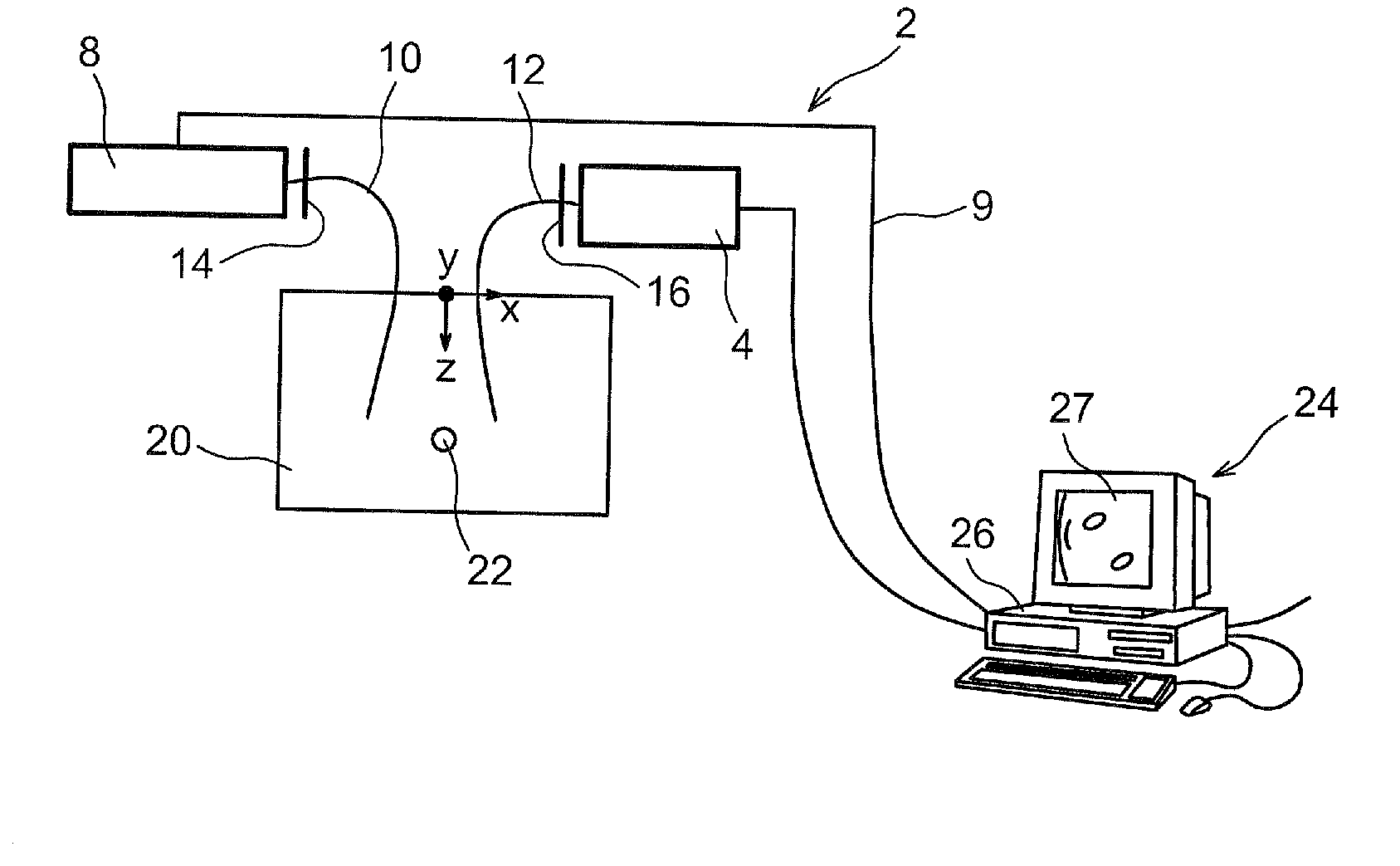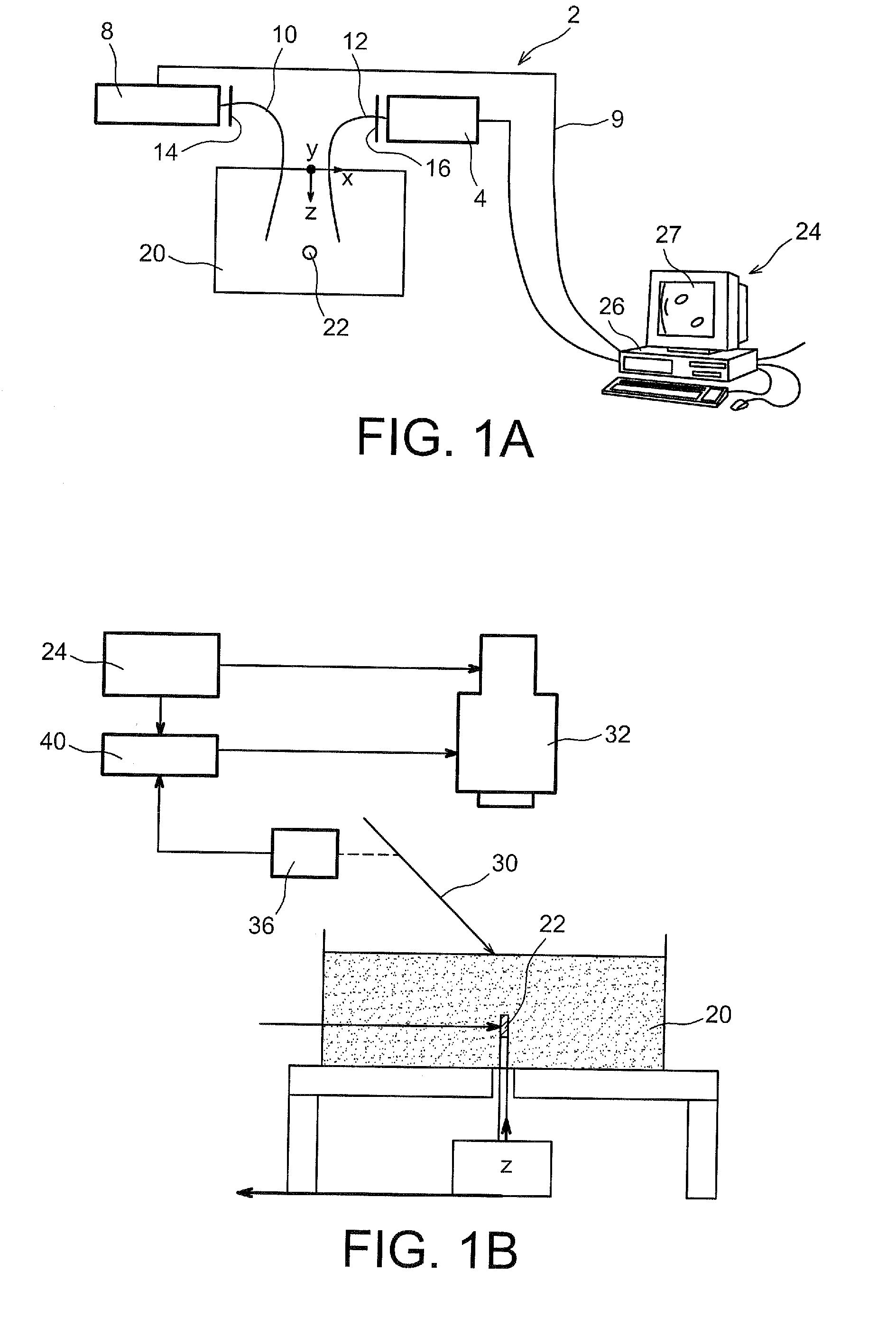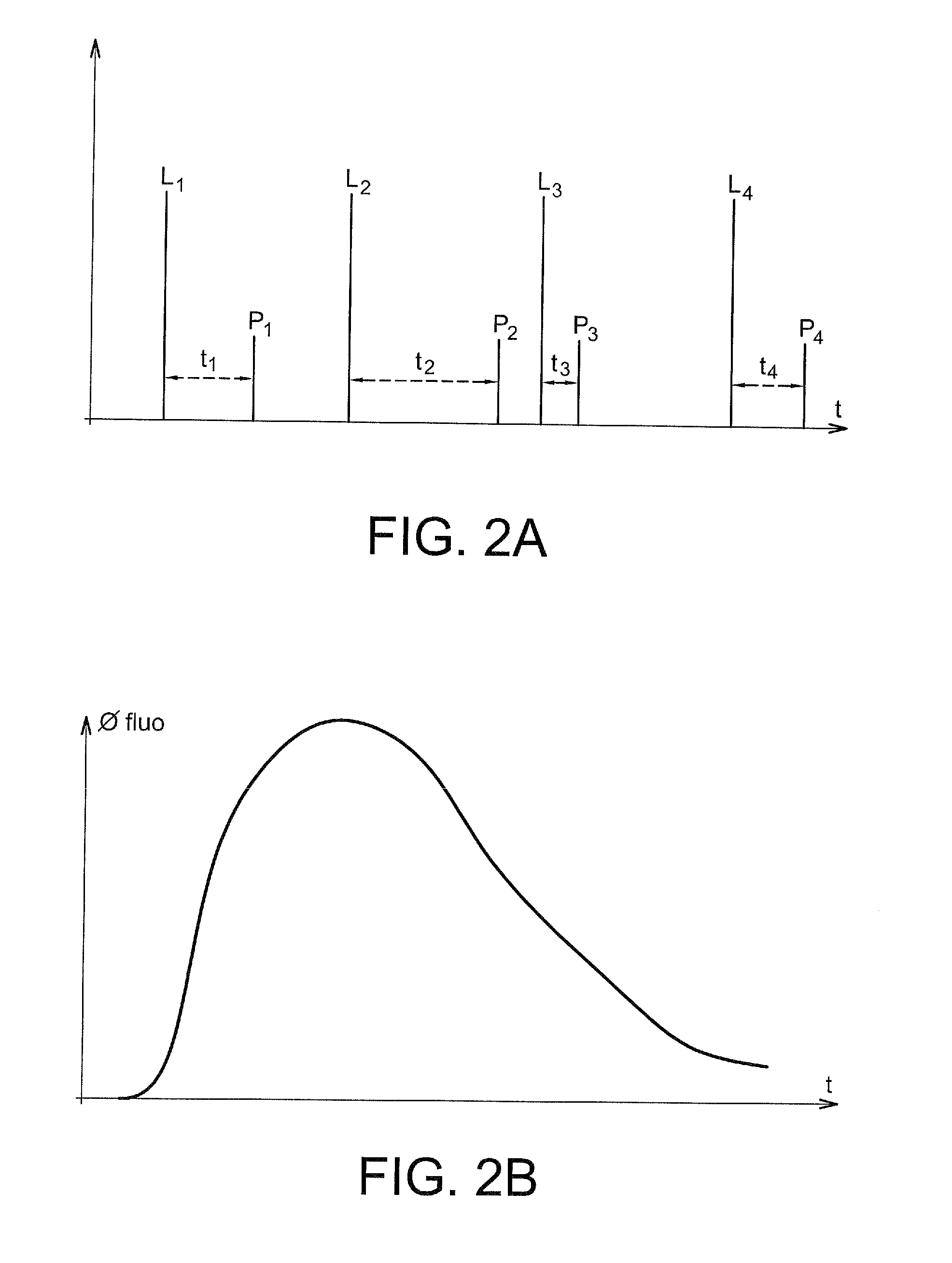Method And Device For 3D Reconstruction Of The Distribution Of Fluorescent Elements
a fluorescent element and 3d reconstruction technology, applied in the field of fluorescence molecular imaging, can solve the problems of difficult in vivo measurement, high cost of calculation time, and complex reconstruction techniques
- Summary
- Abstract
- Description
- Claims
- Application Information
AI Technical Summary
Benefits of technology
Problems solved by technology
Method used
Image
Examples
Embodiment Construction
[0013]The invention first relates to a method for processing emitted fluorescence signals, after excitation by radiation from a radiation source, by at least one fluorophore with a lifetime τ in a surrounding medium, which signals are detected by detection means, and which method comprises:[0014]the detection of a plurality of fluorescence signals (Φfluo) emitted by the fluorophore(s) in the surrounding medium, each signal corresponding to a relative position, on the one hand of the fluorophore(s) and on the other hand of the source and the detection means,[0015]the calculation, based on these detected fluorescence signals, of values of a variable, independent of τ but dependent on the position or the spatial distribution of fluorophores in said medium,[0016]the determination of the position or the spatial distribution of fluorophores in said medium on the basis of the values of said variable.
[0017]The fluorophore(s) can be bonded to biological tissue, for example target cells of in...
PUM
 Login to View More
Login to View More Abstract
Description
Claims
Application Information
 Login to View More
Login to View More - R&D
- Intellectual Property
- Life Sciences
- Materials
- Tech Scout
- Unparalleled Data Quality
- Higher Quality Content
- 60% Fewer Hallucinations
Browse by: Latest US Patents, China's latest patents, Technical Efficacy Thesaurus, Application Domain, Technology Topic, Popular Technical Reports.
© 2025 PatSnap. All rights reserved.Legal|Privacy policy|Modern Slavery Act Transparency Statement|Sitemap|About US| Contact US: help@patsnap.com



